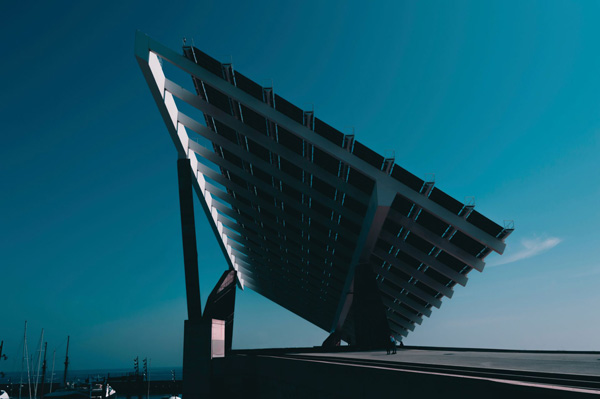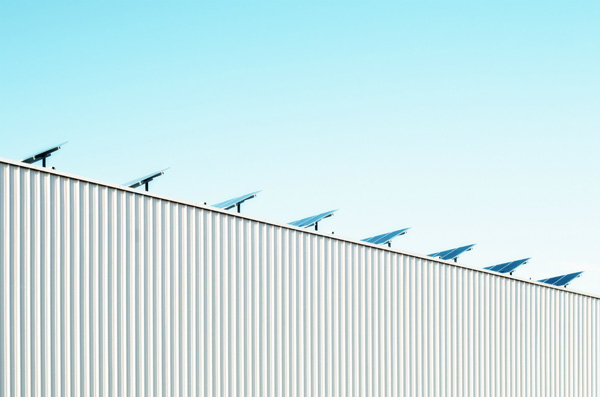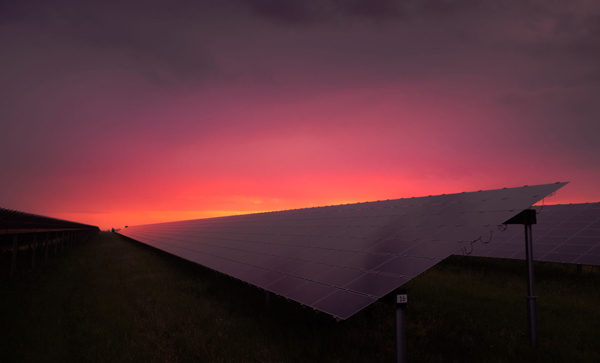
Solar is big business, and that’s putting downward pressure on energy bills.
But you usually have to either invest a healthy amount of capital to see those savings on future energy bills or look into solar power sales and service agreement.
Still, the rising ubiquity of solar power is exciting. However, don’t chase solar to the exclusion of other energy efficiency initiatives. Before even pitching a budget for a new solar energy system, a facility should be made as energy efficient as possible — so there may need to be other items addressed before the actual solar panel farm you’re thinking of.
The needs and goals of the company should be determined so that options make sense when presented along together with case studies. It’s a process in itself, and as you move along it the path forward should become clear.
A Facility Manager’s Checklist for Going Solar
To be able to argue successfully that going solar would benefit your facility, you need to gather information. The ownership of the buildings and who pays for the electricity would obviously be key considerations, the team at Inman Solar writes. Other factors include:
- current energy cost for the past year or more,
- the proposed location of the solar panel (ground-mounted vs. rooftop systems),
- financing options and tax incentives available,
- and whether a local utility company is open to buying back any excess energy.
And if you haven’t already, it’s important that you’ve already made the facility as energy efficient as possible. That’s because the larger your solar energy system, the more expensive it’ll be.
The team at the Adams County Government Center in Colorado says to look at measures such as retrofitting your lighting with higher efficiency fixtures and ensuring all buildings are well insulated. Any rooftops being considered for solar panel installation need to be examined, as well.
“The life expectancy of a solar system can be 25 years or longer,” the team writes. “If your roof needs replacing within the next 10 years, this can add a substantial cost that must be evaluated before installing solar.”
One fix can be as easy as cutting a hole in the roof to let in natural light.
As Rodger Russ, North American sales manager for the roof division of Butler Manufacturing explains, daylighting saves energy used on supplemental artificial lighting, providing a return on investment in three to five years.
Russ offers a few more daylighting technologies that might be helpful:
- Self-curbing — quick to install, and helps maintain weather tightness
- Prismatics — diffuse natural light, helping you avoid glares and hot spots
- Domed units — add as much as three times the amount of natural light to a space

Going Solar Makes Financial Sense
The sustainable energy of the sun isn’t just clean; it’s cheap, too.
Last year, the average price of solar energy in almost 60 emerging markets, including India and China, dropped below the prices of coal, gas and wind. Science writer David Nield reports that solar is now about half the price of coal, and it comes with the big benefit of reduced carbon emissions.
He points out that solar isn’t the cheapest source of renewable energy everywhere, at least not yet. “The cost depends on sunshine availability, plus the energy contracts that are already in place, and what government subsidies are on offer,” Nield writes.
Countries Around the World Are Making the Switch
That said, Cat DiStasio at Inhabitat writes that Chile is generating so much electricity from its solar power industry that the country is giving the power away for free. And in the UK, solar panels generated more electricity than coal from March through September 2016, the Independent’s Ian Johnston reports.
Coal’s upper hand in places like the UK is winter. The dark and the cold force coal power to take over during those months, but energy storage systems are currently being designed to solve that problem.
Sunny California is Reaping the Benefits of Solar, Too
The same things are happening right here at home, Quartz reporter Cassie Werber says: “California is getting so much power from solar that wholesale electricity prices are turning negative.”
On one day in March 2017, for example, solar power produced in California met more than half the power needs of the entire state for a few hours. The power of 4 million kWh of electricity came from a variety of sources, including panels on private homes, solar thermal plants and large photovoltaic farms.
“It’s a massive and rapid change,” Weber writes. “Just 15 years ago, the state produced almost no power from solar at all.”
Why Solar Keeps Getting Cheaper
The argument against going solar has historically been cost and reliability.
Although the sun’s rays are the most abundant resource the Earth has, transferring that energy into a useful power supply has not been a straightforward process. Storing excess energy to meet spikes in demand has been a major stumbling block.
Jackson Electric Membership Corporation, one of the largest electric non-profit cooperatives in Georgia and the nation, admits that its current portfolio is made up primarily of natural gas, oil and nuclear power, with renewables accounting for just one percent.
That’s about to change.
“Thanks to advancements in photovoltaic (solar) panels and batteries, the availability of solar energy is expanding,” the team writes. “In addition, the cost of equipment necessary to produce electricity from sunshine has declined significantly within the last five years.”
Solar is starting to make financial sense, says Jonathan Weaver, Jackson EMC project engineer. “It’s important to have a good mix of energy inputs, and that means putting in solar where it makes sense.”
It’s not just developments in storage and batteries that is making solar cheaper and more efficient. Buildings.com highlights a handful of other important innovations, including solar cells that can be printed and attached to pretty much any surface, which offers building owners and facilities managers many more opportunities to harness solar power.

Countering the Size Argument
US companies of all sizes are investing in clean energy.
Bloomberg’s Brian Eckhouse confirms that a significant proportion of the smaller Fortune 500 companies have set clean-energy targets for themselves. And many are finding that renewable energy isn’t just good for the environment; it’s often cheaper.
The savings are impressive, Eckhouse writes. Nearly two-fifths of Fortune 500 companies report a collective $3.7 billion in annual savings, according to his research.
And while any company, regardless of size or business sector, can reduce greenhouse-gas emissions, increase energy efficiency and see savings, it’s the really big companies that act as influencers. When Salesforce goes net-zero 33 years ahead of schedule, or Toyota and Apple install huge on-site solar projects, it makes headlines.
At GreenTechMedia, senior editor Julia Pyper has all three stories:
- Now that Salesforce’s net-zero carbon emissions commitment for 2050 has been achieved decades early, the software company is moving toward 100 percent renewable energy.
- Toyota is building the largest solar array in Texas, with more than 20,000 solar panels across four parking garages.
- Apple is building one of the largest on-site solar installations in the world at its California headquarters, to cover two-thirds of the building’s 750,000-square-foot rooftop.
If you don’t have a 750,000-square-foot roof, take heart. Tesla’s latest solar panels, made by Panasonic, work well for smaller buildings. Karla Lant at Futurism says the panels are designed to integrate with a battery unit, allowing energy to be stored for use at night, on cloudy days or during grid outages.
Case Studies
Nothing speaks louder than success, and some examples you can point to when pitching your budget for new solar might include the following five examples.
MIT
This 650-acre solar farm in North Carolina, with its 60-megawatt output capacity, can serve as an example for institutions of any size to access renewable energy in amounts that might not be possible if acting alone.
The power purchase agreement has three parties: MIT, Boston Medical Center and Post Office Square Corporation. Together, they built the solar farm of 255,000 panels, which is now producing clean energy equivalent to nearly half of MIT’s total campus electricity use.
Saint Francis Hospital
This medical center in Hartford, Connecticut, will save $600,000 in energy costs over the next two decades and reduce greenhouse gas emissions with the installation of solar panels on its parking roof.
The 1,485 panels generate almost 535,000 kilowatts annually, writes Jeff Ferenc, senior editor at Health Facilities Management. The project is funded through a state grant in partnership with renewable energy company Soltage.
Saint Francis did not have to pay for the purchase or installation of the photovoltaic panels. The solar power sales and service agreement it entered into sets out that Soltage owns and operates the power plant, and sells the electricity back to the hospital at reduced rates.
Shedd Aquarium
In Chicago, Mayor Rahm Emanuel announced the city’s commitment to have its public buildings’ electrical use switched to 100 percent renewable energy by 2025.
The City of Chicago press release further notes that the Shedd Aquarium is trying to reduce its energy use by half by 2020, and it has more than 900 solar panels installed to that end. “As a member of Mayor Emanuel’s Retrofit Chicago Energy Challenge, Shedd Aquarium has also retrofitted nearly 1,000 of its own light bulbs to LED and installed a 60,000 pound, one-megawatt battery on their own property,” the release says.
Golden 1 Center
Dubbed the “greenest arena in the world” by Venues Today publisher Linda Deckard, Golden 1 Center in Sacramento has more than 3,000 solar panels on its roof. Generating in excess of 280,000 kWh of power, the building — home to the NBA’s Sacramento Kings — can also draw on energy from a nearby solar farm.
To put that kind of energy in perspective, Deckard writes: “That’s enough kWh for a typical electric vehicle to drive over 800,000 miles — nearly 300 cross-country trips.”
Kentucky Coal Museum
Some may consider it a little ironic that solar panels are being installed on the roof of a coal museum in order to reduce energy costs, but you can’t argue with the results. The Kentucky Coal Museum expects to save between $8,000 and $10,000 a year on electricity bills, Greentech Media Editor-in-Chief Stephen Lacey reports.

School Facilities Managers Have an Advantage
If you’re an FM of a school, the Solar Energy Industries Association says your rooftops make those properties great candidates for solar photovoltaic or solar thermal systems.
Most schools in the US are built with large, flat roofs, and the opportunity for installing solar energy systems there is still underutilized. Currently, only about 3,700 systems are located on public and private K-12 schools nationwide.
Another potential space that could be put to use is school parking lots with solar photovoltaic canopies. An additional benefit here would be the shade provided on sunny days.
The SEIA estimates that if all 72,000 schools were to install an average-sized system, the total capacity would reach 5.4 GW, or more than one-third of the entire solar energy capacity currently in the country.
In its study on solar in US schools, the Solar Foundation and SEIA found that:
- Each of 450 school districts could save more than $1 million over 30 years by installing a solar system.
- As many as 72,000 of the total 125,000 schools nationwide can go solar cost-effectively.
- The 3,727 solar energy systems that do exist at US schools today offset average energy costs by nearly $21,000 per year per school.
This study also found a unique reason that schools are going solar, a key benefit in addition to reducing harmful emissions. For teachers, solar energy systems present educational opportunities in multiple STEM subjects.
“Facilities managers recognize the value of solar energy in providing a long-term hedge against increases in utility rates while school boards and administrators are attracted to the technology’s ability to deliver cost savings.”
Credits:
NASABiel Morro
Scott Webb
Karsten Würth

